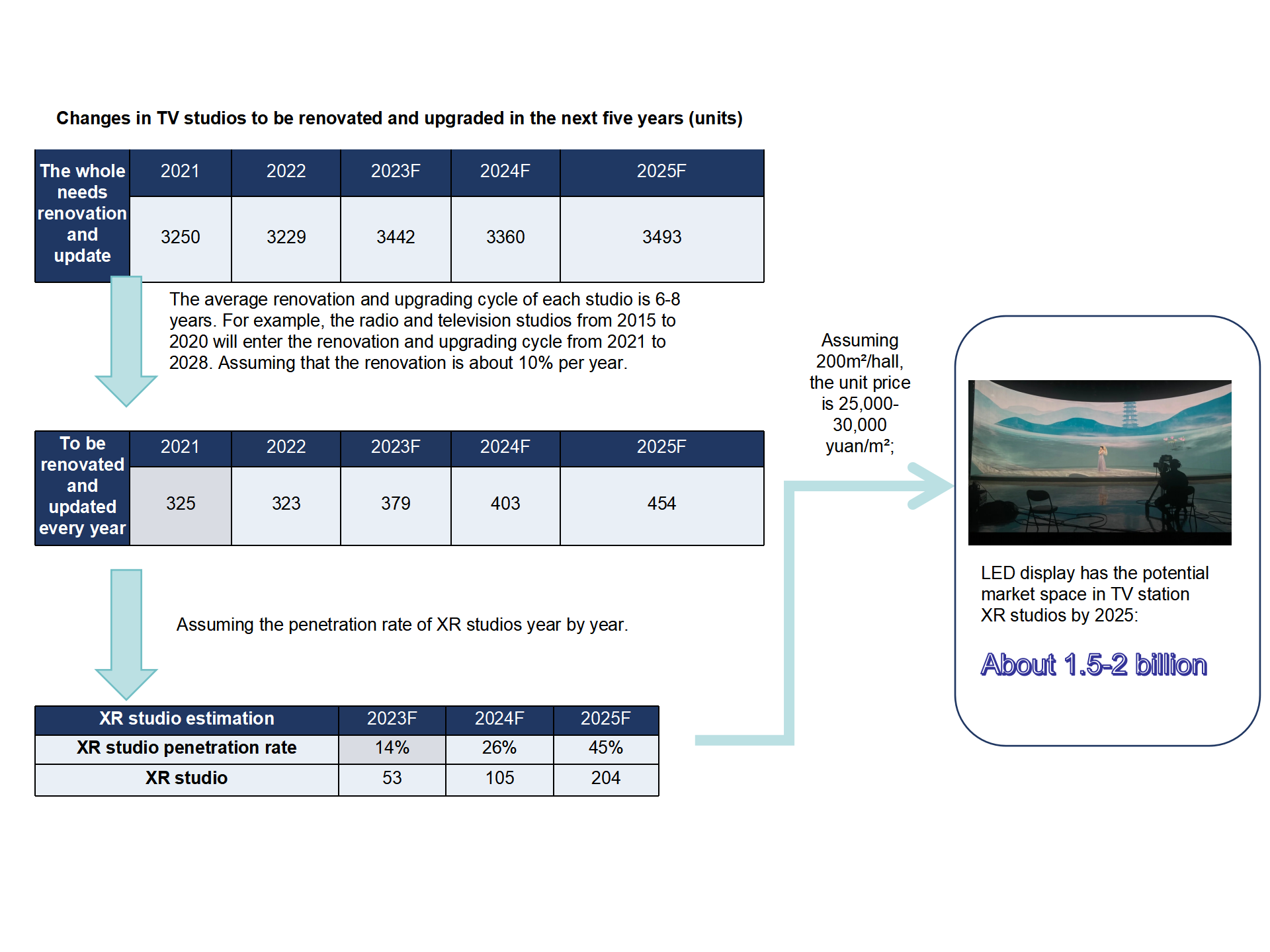The studio is a place where light and sound are used for spatial art production. It is a regular base for TV program production. In addition to recording sound, images must also be recorded. Guests, hosts and cast members work, produce and perform in it. At present, studios can be classified into real-life studios, virtual green screen studios, LCD/LED large-screen studios, and LED XR virtual production studios according to scene types. With the development of XR virtual shooting technology, virtual green screen studios will continue to be replaced; at the same time, there is also a significant push on the national policy side. On September 14, the State Administration of Radio, Film and Television issued the “Notice on Carrying out the Application Demonstration of Radio, Television and Network Audiovisual Virtual Reality Production Technology”, encouraging qualified enterprises and institutions to participate and carry out key technology research on virtual reality production; the notice clearly pointed out that research on micro-display technologies such as Fast-LCD, silicon-based OLED, Micro LED and high-performance free-form surfaces, BirdBath, optical waveguides and other optical display technologies should be carried out to apply new display technologies that meet the characteristics of virtual reality, and improve the quality of content presentation in various forms. The issuance of the “Notice” is an important measure to implement the “Action Plan for the Integrated Development of Virtual Reality and Industry Applications (2022-2026)” jointly issued by five ministries and commissions.
The XR virtual shooting studio system uses the LED screen as the TV shooting background, and uses camera tracking and real-time image rendering technology to make the LED screen and the virtual scene outside the screen track the camera’s perspective in real time. At the same time, the image synthesis technology synthesizes the LED screen, real objects and virtual scenes outside the LED screen captured by the camera, thereby creating an infinite sense of space. From the perspective of the system architecture, it mainly consists of four parts: LED display system, real-time rendering system, tracking system and control system. Among them, the real-time rendering system is the computing core, and the LED display system is the construction foundation.
Compared with the traditional green screen studio, the main advantages of XR virtual studio are:
1. One-time construction of WYSIWYG realizes free scene conversion and improves program production efficiency; in the limited studio space, the display space and the host space can be arbitrarily converted, and the shooting angle can be arbitrarily adjusted, so that the effect of the combination of the host and the performance environment can be presented in time, and it is more convenient for the scene creation team to modify the creative ideas in time;
2. Reduce costs and increase efficiency. For example, it can be presented through virtual means, and a few leading actors can complete a large-scale performance;
3. AR implantation and virtual expansion, virtual host and other functions can greatly enhance the interactivity of the program;
4. With the help of XR and other technologies, creative ideas can be presented in time, opening up a new path for artists to restore art;
From XR virtual shooting According to the application requirements of LED display screens, the current application forms include tri-fold screens, curved screens, T-shaped folding screens, and two-fold screens. Among them, tri-fold screens and curved screens are more widely used. The screen body is generally composed of the main screen on the back, the ground screen, and the sky screen. The ground screen and the back screen are essential for this scene, and the sky screen is equipped according to specific scenes or user needs. When shooting, because the camera maintains a certain distance from the screen, the current mainstream application spacing is between P1.5-3.9, among which the sky screen and the ground screen spacing are slightly larger. The main screen application spacing is currently P1.2-2.6, which has entered the small spacing application range. At the same time, it has high requirements for refresh rate, frame rate, color depth, etc. At the same time, the viewing angle generally needs to reach 160°, support HDR, be thin and fast to disassemble and assemble, and have load-bearing protection for the floor screen.
Example of XR virtual studio effect
From the perspective of potential demand, there are currently more than 3,000 studios in China waiting to be renovated and upgraded. The average renovation and upgrading cycle for each studio is 6-8 years. For example, the radio and television studios from 2015 to 2020 will enter the renovation and upgrading cycle from 2021 to 2028 respectively. Assuming that the annual renovation rate is about 10%, the penetration rate of XR studios will increase year by year. Assuming 200 square meters per studio and the unit price of LED display is 25,000 to 30,000 yuan per square meter, it is estimated that by 2025, the potential market space for LED display in TV station’s XR virtual studio will be around 1.5-2 billion.
From the perspective of the overall potential scene demand of XR virtual shooting applications, in addition to broadcasting studios, it can also be used in VP film and television production, education training teaching, live broadcasting and other scenes. Among them, film and television shooting and broadcasting will be the main demand scenes in recent years. At the same time, there are multiple driving forces such as policies, new technologies, user needs, and LED manufacturers. Predicts that by 2025, the market size of LED display screens brought by XR virtual shooting applications will reach nearly 2.31 billion, with a clear growth trend. In the future, XYGLED will continue to track the market and look forward to the large-scale application of XR virtual shooting.
Post time: Feb-22-2024







